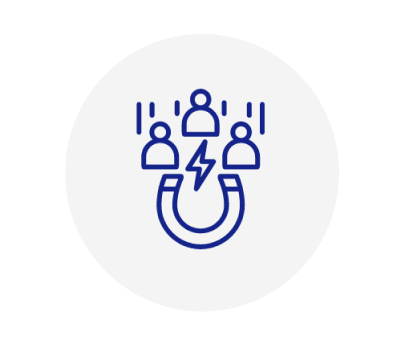Lead
Generation
Make Your Data
Work For You
What is Lead Generation?

Here's a breakdown of lead generation for a business:
1. Identifying Target Audience:
The first step in lead generation is defining your target audience. This involves understanding the demographics, interests, and pain points of your ideal customers to tailor your marketing efforts effectively.
2. Creating Compelling Offers:
To attract potential leads, businesses offer valuable incentives such as ebooks, webinars, free trials, or discounts in exchange for contact information. These offers should address the needs and interests of your target audience and provide them with solutions to their problems.
3. Building Landing Pages:
Landing pages are dedicated web pages designed specifically for lead generation purposes. They contain information about the offer and a form where visitors can submit their contact details in exchange for the offer. Landing pages should be optimized for conversion with clear and compelling calls-to-action (CTAs).
4. Driving Traffic:
To generate leads, businesses need to drive targeted traffic to their landing pages through various marketing channels such as search engine optimization (SEO), pay-per-click (PPC) advertising, social media marketing, email marketing, content marketing, and influencer partnerships.
5. Capturing Leads:
Once visitors land on the landing page, they're prompted to fill out a form with their contact information to access the offer. The form typically collects essential details such as name, email address, company name, and sometimes additional qualifying information.
6. Nurturing Leads:
After capturing leads, businesses need to nurture them through personalized and targeted communication to build trust, educate them about the products or services, and guide them through the sales funnel. This can be done through email marketing, retargeting ads, social media engagement, and other marketing automation tools.
7. Qualifying Leads:
Not all leads are ready to make a purchase immediately. It's essential to prioritize and qualify leads based on factors such as their level of interest, budget, timeline, and fit with your ideal customer profile. This ensures that sales teams focus their efforts on leads with the highest likelihood of conversion.
8. Tracking and Measuring Performance:
To assess the effectiveness of lead generation efforts, businesses need to track and analyze key metrics such as conversion rates, cost per lead, lead quality, and return on investment (ROI). This data helps optimize campaigns and allocate resources to channels that drive the best results.


